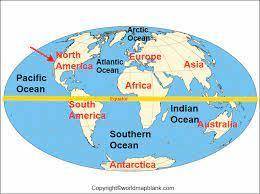
Biology, 21.09.2021 06:30 nathanbrockdac
Assess average daily temperatures of city A , located at 15°s and are 5°cooler than average daily temperatures for city B , located at 30°s What might account for the cooler temperatures in city A, even though it is closer to the equator?
Rules:
- no answering RANDOM STUFF
- if u don't know give others chance
- don't reply or answer in rude remarks
rewards✨
-brainliest
-some points
- a ty
/ᐠ。ꞈ。ᐟ\

Answers: 1
Another question on Biology

Biology, 21.06.2019 15:00
Metamorphic rocks are formed when sedimentary or igneous rocks are subjected to heat or pressure and recrystallize without melting. which of the following rocks results from the metamorphism of limestone? a. granite b. slate c. sandstone d. marble
Answers: 1

Biology, 22.06.2019 02:20
Humans are believed to have evolved in coastal regions in east africa. the region had an abundant supply of fish for early humanoids to eat. when scientists analyze the fads gene they see an interesting pattern. people whose families have lived in this area of east africa for generation show a high level of diversity in alleles for the fads gene. conversely, people whose families had migrated inland a moderate distance from sources of fish showed a much lower diversity for fads gene alleles. additionally, the fads alleles found in people whose family has lived inland for generation are almost all gene alleles which produce fads proteins with a high level of function and activity. how do anthropologists explain this?
Answers: 3

Biology, 22.06.2019 03:30
Rease is an enzyme used by plants to break down urea (a nitrogen-containing compound) into carbon dioxide and ammonia. urease urea > > > carbon dioxide and ammonia ammonia is broken down by plants into a nitrogen source plants need to grow. thus, plants could not use urea as a nitrogen source unless it was first converted to ammonia. in soybean plants there are two different kinds of urease, one produced in the seeds and the other produced in the leaves of the plant. three types of soybean plants were used in a set of experiments: normal soybeans and two mutant strains, one lacking the urease in the seeds only (strain 1) and one lacking urease in the leaves only (strain 2). experiment 1 separate areas in a field were planted with normal, strain 1, and strain 2 soybeans. all types of soybeans appeared to grow, flower, and produce seeds equally well. there were no externally detectable differences among the strains. experiment 2 small pieces of plant leaves of equal weight were obtained from each type of soybean plant and separately placed on media in culture dishes. tissue growing in this way will become an unorganized clump of cells referred to as callus. to provide a controlled nitrogen source, half the tissue samples of each type were placed on media containing urea, and the other half of the samples were placed on media containing ammonia. after 30 days, the weight gain for each of the callus samples was determined. results are shown in the table below.
Answers: 2

You know the right answer?
Assess average daily temperatures of city A , located at 15°s and are 5°cooler than average daily te...
Questions









Mathematics, 17.03.2020 17:29



Mathematics, 17.03.2020 17:29



Mathematics, 17.03.2020 17:29





History, 17.03.2020 17:29




